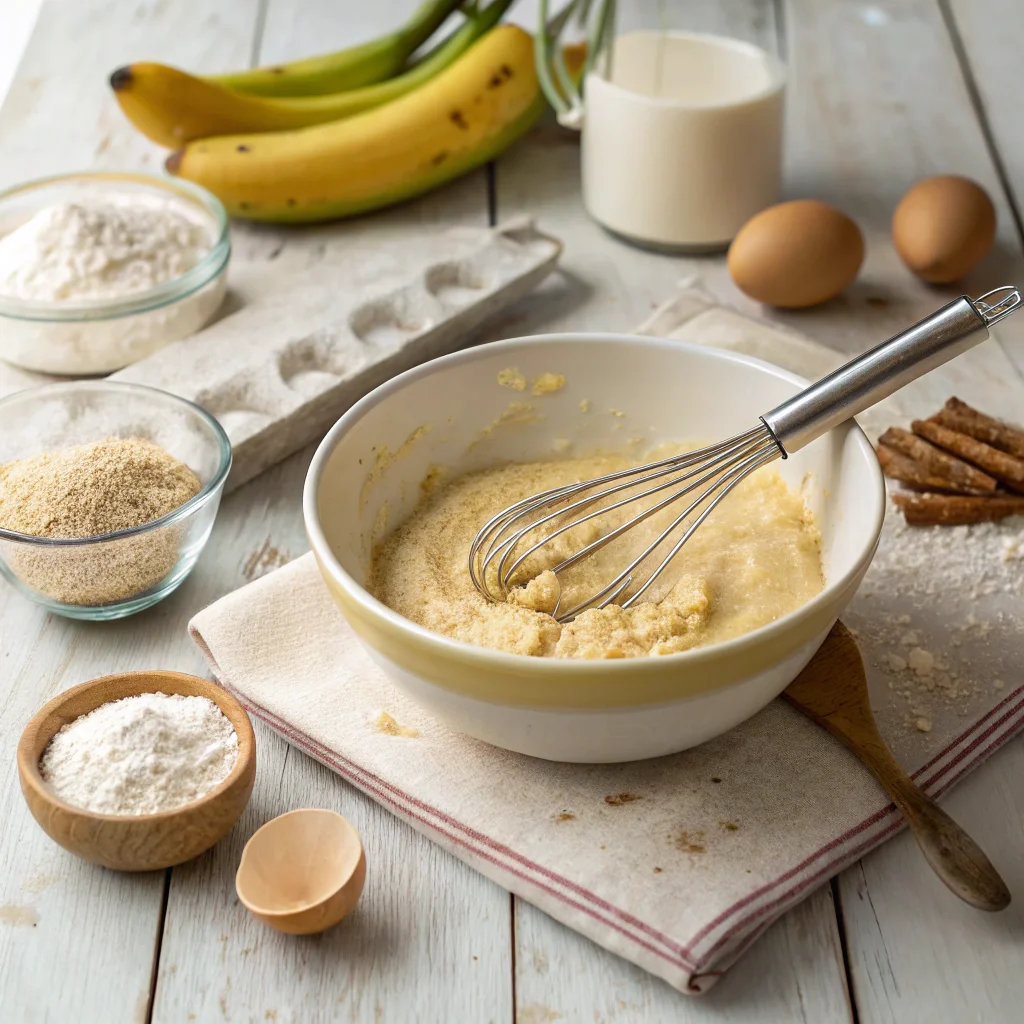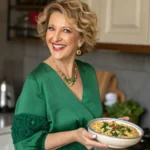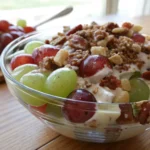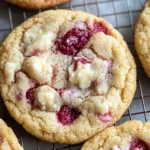Introduction to Baby Pancake Recipes
Pancakes have long been a favorite breakfast choice, and now you can adapt them for your little one with the perfect baby pancake recipe. These soft, nutritious pancakes can become ideal for babies starting solids with a few tweaks.
Importance of Introducing Pancakes to Babies
Introducing pancakes to babies can be an excellent way to expand their palate and provide essential nutrients. Since pancakes are soft and easy to chew, they are an excellent option for babies transitioning to solid foods. Moreover:
- Pancakes can help introduce different textures, aiding in the development of chewing skills.
- They are versatile and can incorporate nutrient-rich ingredients like fruits and whole grains.
- Pancakes encourage self-feeding, fostering independence during mealtimes.
By starting with a baby pancake recipe, you ensure your baby is getting wholesome and age-appropriate nutrition.
Nutritional Benefits of Homemade Baby Pancakes
Homemade baby pancakes are far superior to store-bought snacks. When you make pancakes at home:
- You control the ingredients, avoiding added sugars and preservatives.
- You can include nutrient-packed foods such as bananas, oats, or sweet potatoes.
- These pancakes are rich in carbohydrates, providing your baby’s energy to grow and explore.
Additionally, homemade recipes allow you to experiment with ingredients that suit your baby’s unique dietary needs or preferences.
To Read Later: Cracker Barrel Pancake Recipe: Perfect Homemade Pancakes Guide
What Is a Baby Pancake Recipe?
Understanding what makes a baby pancake recipe unique is essential for creating meals tailored to your baby’s developmental stage.
Definition and Characteristics
A baby pancake recipe is designed specifically for infants and toddlers. These pancakes:
- They are made with simple, nutritious ingredients like bananas, oats, and eggs.
- Exclude harmful additives such as refined sugar and excessive salt.
- Have a soft, melt-in-the-mouth texture that’s perfect for babies.
Such recipes ensure that pancakes are both safe and nourishing for your baby.
Differences from Regular Pancakes
Unlike traditional pancakes, baby pancakes prioritize health and simplicity. The differences include:
- Ingredients: Baby pancakes use natural sweeteners like fruit, avoiding processed sugars.
- Portion Size: They are smaller, making them easier for tiny hands to hold.
- Preparation: Baby-friendly recipes focus on allergen awareness and appropriate textures.
A baby pancake recipe becomes a thoughtful choice for your child’s meals by focusing on these aspects.
Benefits of Baby Pancake Recipes
Nutritional Advantages
Baby pancakes are packed with essential nutrients. Depending on the ingredients used, they can provide:
- Healthy carbohydrates for energy.
- Vitamins and minerals from fruits and vegetables.
- Protein from eggs or dairy for muscle development.
Including a variety of wholesome ingredients ensures that your baby benefits from a balanced meal.
Ease of Preparation
A baby pancake recipe is straightforward and quick to prepare, which is a lifesaver for busy parents. You can:
- Use a blender to mix all ingredients in minutes.
- Cook small batches that can be refrigerated or frozen for later use.
- Adapt recipes quickly to suit what you have in your kitchen.
Versatility in Ingredients
One of the best things about baby pancakes is their versatility. You can:
- Add mashed bananas, grated carrots, or blueberries for flavor and nutrients.
- Use alternative flour like almond or oat flour for gluten-free options.
- Experiment with spices like cinnamon for added taste.
This flexibility makes baby pancakes a go-to option for parents looking to offer variety in their baby’s diet.
Essential Ingredients for Baby Pancake Recipes
The best baby pancake recipes use a few simple and wholesome ingredients:
- Whole Grains: Oat flour, whole wheat flour, or quinoa for fiber and energy.
- Fruits: Bananas, apples, or berries for natural sweetness and vitamins.
- Binding Agents: Eggs or chia seeds to hold the Batter together.
- Liquid Ingredients: Breast milk, formula, or plant-based milk to ensure a smooth consistency.
These essential components create a nutrient-rich foundation for baby pancakes while keeping them easy to digest.
Step-by-Step Guide to Making Baby Pancake Recipes
Creating the perfect baby pancake recipe is straightforward, but diving deeper into each step ensures the best results. By carefully following these detailed instructions, you can make nutritious and delicious pancakes that your baby will enjoy.
1 – Gather Your Ingredients
Before starting, gather all the necessary ingredients. For a basic baby pancake recipe, you’ll need:
- 1 ripe banana: Overripe bananas are perfect as they mash easily and add natural sweetness.
- 1 egg: Acts as a binder and provides essential protein.
- 2 tablespoons oat flour: Offers fiber and creates a smooth texture.
- 1-2 tablespoons milk or formula: Ensures the Batter is the right consistency.
- Optional: A pinch of cinnamon or nutmeg for added flavor.
Having all ingredients measured and ready makes the preparation process seamless. For babies with allergies, consider substitutes like applesauce for eggs or almond milk for dairy.
2 – Prepare the Batter
The Batter is the foundation of any baby pancake recipe, and a well-prepared batter guarantees excellent pancakes. Follow these steps:

- Mash the Banana: Place the banana in a mixing bowl and mash it with a fork until smooth. Some small lumps are OK, but aim for a mostly even consistency.
- Add the Egg: Crack the egg into the mashed banana and whisk thoroughly. If you’re avoiding eggs, use a flaxseed substitute (1 tablespoon ground flaxseed mixed with three tablespoons water).
- Incorporate Dry Ingredients: Gradually stir in the oat flour, ensuring no clumps remain. For babies with gluten sensitivity, replace oat flour with almond flour or a certified gluten-free alternative.
- Adjust the Consistency: Add milk or formula one tablespoon at a time, mixing until the Batter reaches a pourable but slightly thick consistency. The Batter should not be runny, as it will spread too much during cooking.
Pro Tip: Let the batter rest for 5-10 minutes. This allows the flour to absorb the liquid, resulting in fluffier pancakes.
3 – Cook the Pancakes
Cooking is a crucial step in bringing your baby pancake recipe to life. Proper technique ensures pancakes are soft, golden, and easy for your baby to eat.
- Preheat the Pan: Use a non-stick skillet or griddle to prevent sticking. Heat it over medium heat and lightly grease it with butter, coconut oil, or a non-stick spray.
- Portion the Batter: Use a tablespoon or small ladle to pour the Batter onto the pan. Aim for mini pancakes about 2-3 inches in diameter. Smaller pancakes are more manageable for babies to hold and eat.
- Cook the First Side: Allow the pancakes to cook undisturbed for 1-2 minutes. You’ll know they’re ready to flip when tiny bubbles form on the surface and the edges look set.
- Flip Carefully: Using a spatula, gently flip each pancake. Cook the second side for another 1-2 minutes or until golden brown.
- Check for Doneness: To ensure the pancakes are fully cooked, lightly press the center with a spatula. If it springs back, the pancake is ready.
Pro Tip: Keep the heat consistent. Too high a flame can burn the pancakes on the outside while leaving the inside undercooked. Medium heat works best.
4 – Serve and Store
Once the pancakes are cooked, let them cool to room temperature before serving. This prevents burns and ensures they are safe for your baby to eat.
- Serving Suggestions: Serve plain or with a thin layer of natural fruit puree, unsweetened applesauce, or yogurt for added flavor. Avoid using honey for babies under one year due to the risk of botulism.
- Portion Sizes: Start with one or two small pancakes and observe your baby’s reaction. Babies often prefer smaller portions they can quickly grasp.
For leftover pancakes, follow these storage tips:
- Refrigeration: Store in an airtight container for up to three days. Reheat in a microwave or toaster on low heat before serving.
- Freezing: Spread pancakes on a baking sheet in a single layer. Once frozen, transfer them to a freezer-safe bag. Pancakes can be frozen for up to one month and reheated as needed.
By mastering these steps, you can make the best baby pancake recipe every time, ensuring they’re delicious, nutritious, and perfectly tailored to your baby’s needs.
Tips for Perfect Baby Pancake Recipes
- Use Ripe Fruits: Overripe bananas add natural sweetness.
- Experiment with Sizes: Start with small pancakes for easy handling.
- Keep It Soft: Avoid overcooking to ensure a soft texture.
- Add Spices: Cinnamon or nutmeg can enhance flavor without sugar.
By following these tips, your baby pancake recipe will turn out perfect every time.
Common Mistakes to Avoid in Baby Pancake Recipes
- Adding Too Much Liquid: This can make the Batter runny and challenging to cook.
- Skipping Key Ingredients: Forgetting eggs or binding agents can result in crumbly pancakes.
- Overcooking: Hard pancakes can be challenging for babies to chew.
Avoid these pitfalls to ensure your pancakes are baby-friendly.
Variations of Baby Pancake Recipes
Gluten-Free Baby Pancake Recipe
- Replace regular flour with almond or oat flour.
- Ensure all other ingredients are gluten-free.
Vegan Baby Pancake Recipe
- Use flaxseed meal or applesauce as an egg substitute.
- Opt for plant-based milk.
Savory Baby Pancake Recipe
- Add finely grated zucchini or carrots.
- Sprinkle a pinch of herbs like basil or oregano.
These variations allow you to customize recipes to suit dietary needs and preferences.
FAQs About Baby Pancakes and First Foods
Can Babies Eat Homemade Pancakes?
Yes, babies can eat homemade pancakes as long as they are made with baby-friendly ingredients. Homemade pancakes are an excellent choice for introducing solids because they are soft, easy to chew, and can be customized to include nutrient-rich ingredients like bananas, oats, and eggs. Avoid adding sugar or salt, and make the pancakes small enough for your baby to hold and bite into comfortably.
What Is the Difference Between a Dutch Baby and a Pancake?
A Dutch baby is a baked pancake that is fluffier and more custard-like compared to regular pancakes, which are cooked on a griddle or skillet. While a Dutch baby can be modified for babies by omitting sugar and using whole-grain flour, traditional baby pancake recipes are usually smaller and softer, making them easier for babies to handle and eat.
How to Make Baby Formula Pancakes?
You can make baby formula pancakes by substituting formula for milk in your recipe. Here’s a simple method:
- Mix 1 ripe banana, 1 egg, and 2 tablespoons of oat flour.
- Add 2-3 tablespoons of prepared baby formula to achieve the desired batter consistency.
- Cook small pancakes on a non-stick pan over medium heat.
Using formula ensures the pancakes are both nutritious and familiar in taste for your baby.
Can My Baby with No Teeth Eat Pancakes?
Yes, babies with no teeth can eat pancakes as long as they are soft and easy to gum. Choose a baby pancake recipe that has a tender texture, such as those made with bananas or oatmeal. Ensure the pancakes are small and thin to prevent choking. You can also tear the pancakes into bite-sized pieces for easier consumption.
What Are the Best First Finger Foods for Babies?
Some of the best first finger foods for babies include:
- Soft fruits like banana slices or steamed apple chunks.
- Steamed vegetables such as carrots, broccoli, or zucchini.
- Small pieces of baby-friendly pancakes.
- Scrambled eggs or omelet strips.
- Toast strips lightly spread with unsweetened nut butter (if no allergies).
These options help develop fine motor skills while providing essential nutrients.
Can My Baby Eat Scrambled Eggs with No Teeth?
Yes, babies without teeth can eat scrambled eggs. Scrambled eggs are soft, easy to chew, and packed with protein, making them an ideal first food. Ensure the eggs are fully cooked and cut into small pieces to avoid choking. For additional nutrition, consider adding mashed vegetables like spinach or sweet potato to the scrambled eggs.
Conclusion on Baby Pancake Recipes
A baby pancake recipe is a versatile, nutritious, and easy-to-make option for your baby’s meals. By incorporating healthy ingredients, following simple preparation steps, and avoiding common mistakes, you can create pancakes that your baby will love. With endless variations to explore, baby pancakes can become a staple in your household, supporting your child’s growth and development.
You May Also Like:
Banana Bread Recipe with 2 Bananas – Easy and Delicious
The Best Brookie Recipe You’ll Ever Try: A Perfect Blend of Brownies and Cookies






